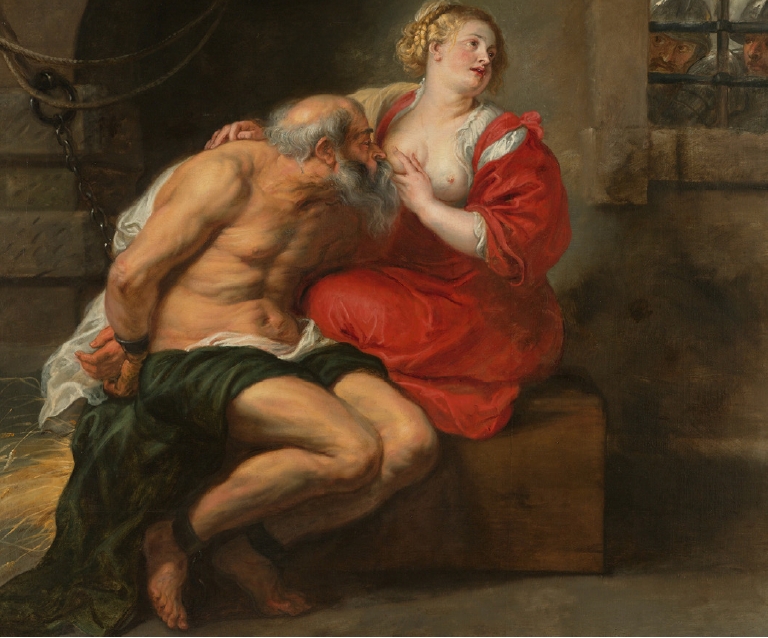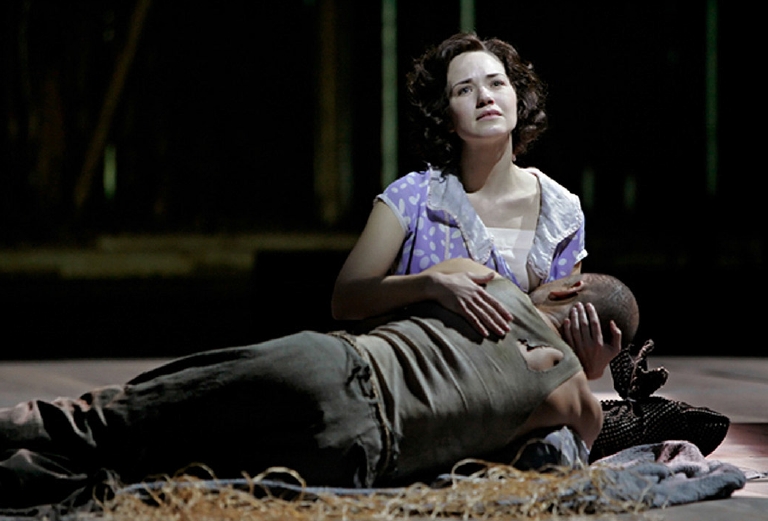The female breast as a symbol of charity through breastfeeding
Article information
The pursuit of the beautiful breast has existed for centuries. As a marker of femininity, a sexual symbol, and a sustainer of new life, the female breast has occupied an iconic position in Western art [1]. Between the medieval and Renaissance periods in France, poetic and artistic portrayals of the female breast expressed not only esthetic values and cultural anxieties concerning sexuality, but also political power, social class, and even religious ideology [2].
However, the female breast can also be a symbol unrelated to sexuality—namely, a symbol of charity. I introduce two cases of breastfeeding as a symbol of charity: one to a woman’s father and another to a starving stranger.
Peter Paul Rubens (1577–1640) painted “Roman Charity” (Caritas Romana, 1625) (Fig. 1) [3]. This painting is based on the exemplary story of a woman, Pero, who secretly breastfeeds her father, Cimon, after he is incarcerated and sentenced to death by starvation. This story expresses the need for charity as a “giving of self” to others that can be explained by the embedded neural network for empathy in the human brain, which is closely linked to the sense of self [4]. It is generally accepted that in ancient Rome, a columna lactaria (lactation column) existed. This place was an ancient marketplace for transactions between those with breast milk to sell and those looking to buy [5].

Cimon and Pero by Peter Paul Rubens (c. 1625). Available from: https://en.wikipedia.org/wiki/Cimon_and_Pero_(Rubens).
John Steinbeck (1902–1968) wrote The Grapes of Wrath (1939). The author follows the fictional journey of the Joads, a family of sharecroppers from Oklahoma, forced to migrate west during the Dust Bowl. The Joads join thousands of other migrants on the trek to the Salinas Valley of California, a place they idealize as rich with opportunity. Rose of Sharon’s baby arrives stillborn during a great flood, and Uncle John dumps the baby’s corpse into a raging river. At the end of the novel, Rose of Sharon, having just lost her own child, breastfeeds a half-dying stranger in a rain-soaked barn surrounded by flooded cotton fields. “The boy tells Ma that his father is starving. The weakened man cannot keep down anything solid, but must have some nourishing liquid like soup or milk. Ma looks to Rose of Sharon, and as their eyes meet, there is silent agreement. Ma takes the rest of the family out of the barn, while Rose of Sharon sits next to the father. Loosening the blanket that covers her body, she offers her full breast of milk to the dying man. As he drinks, a mysterious smile appears on her lips” (Fig. 2).

Ending scene of The Grapes of Wrath. Rose of Sharon, having just lost her own child, breastfeeds a half-dying stranger in a rain-soaked barn surrounded by flooded cotton fields. Available from: https://taliawaite.files.wordpress.com/2012/11/untitled.jpg [6].
Although breastfeeding is not a sexual act, some people may perceive it as such, especially because the female breast is often sexualized. Through these two cases, we see that the female breast can be a symbol of charity through its natural role—namely, breastfeeding. Therefore, in augmentation mammoplasties, I would prefer procedures that save the lactiferous ducts.
Notes
Kun Hwang is an editorial board member of the journal but was not involved in the peer reviewer selection, evaluation, or decision process of this article. No other potential conflicts of interest relevant to this article were reported.
